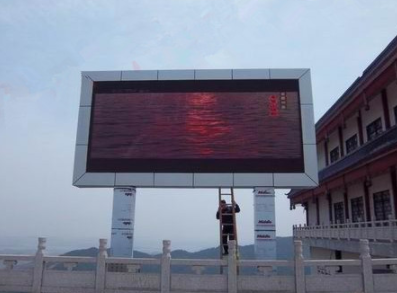LED electronic displays are not easy to assemble, much like setting up a custom-built computer. The process of assembling an LED display is even more complex, involving multiple steps and careful attention to detail. These displays are made up of several modules, which in turn consist of numerous individual LED lamps. Each step must be carried out precisely—every ring needs to be properly connected, as any mistake can significantly affect the overall visual performance of the display.
An image of an LED display is shown here:

The connection of the LED display is crucial. If one connection is loose or faulty, it can cause the entire system to malfunction. Understanding the technical aspects of these connections ensures that the display operates safely and efficiently, as it also relates to the brightness and power requirements of the LEDs. High-brightness LED chips are expensive, but they are now widely used in practical applications. However, the power consumption of a single high-brightness LED is relatively low, so multiple LED panels must be arranged according to specific needs. This setup not only meets the demands for large-scale, high-brightness, dynamic, and color-changing displays but also ensures compatibility with the driver circuits that power them.
There are four main ways to connect LED electronic displays:
First, the series connection: In this simple configuration, LEDs are connected end-to-end, and the same current flows through each one. There's also an improved version known as the bypass series connection.
Second, the parallel connection: This includes both a basic parallel setup and an independently matched parallel method. In the basic mode, LEDs are connected at both ends, ensuring equal voltage across each LED. While this method is less reliable, the independently matched parallel form offers better performance, with full protection for each LED. A failure in one does not affect the others, and the matching can be adjusted more flexibly.
Third, the mixed connection: This combines the advantages of both series and parallel configurations. There are two types: one where the strings are combined first, and another where the strings are combined both at the start and end.
Fourth, the cross-array connection: This design aims to enhance the reliability of the LED display, reduce the failure rate, and ensure consistent performance over time.
In summary, LED display screens can be connected in various ways, and each step requires precision. Engineers and technicians must understand these methods thoroughly. Each connection type has its own pros and cons, and choosing the right one depends on the specific application. Many professionals overlook this detail, leading to issues that can damage customer trust. As a result, even small details can determine success or failure. Therefore, LED display technology must be refined and carefully implemented. This attention to detail is not only essential for quality but also reflects the culture and standards upheld by every reputable company.
Usb Cables,Usb Wires,Usb Wire,Micro Usb Cable
UCOAX , https://www.ucoax.com